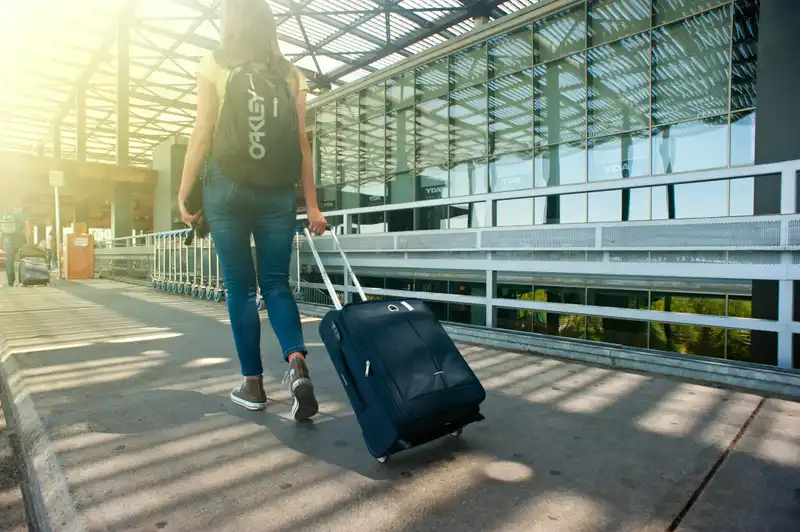Seamless Travel: Transforming Air Travel with Technology
In our ongoing exploration of transformational experience technology, we’ve examined how innovative solutions have revolutionized theme parks, cruise lines, and the hospitality industry. Today, we turn our attention to air travel—a sector ripe for technological enhancement. By leveraging cutting-edge technology, we can create a faster, smoother, and more enjoyable travel experience that benefits both passengers and airline staff.
Enhancing the Passenger Experience
Biometric Boarding and Security
One of the most significant advancements in air travel is the implementation of biometric technology. Airports like Dubai International and Hartsfield-Jackson Atlanta International have introduced biometric boarding systems, allowing passengers to use facial recognition technology to pass through security and board their flights. This innovation not only speeds up the boarding process but also enhances security by providing accurate and fast identity verification.
Mobile Integration
Mobile apps have become essential tools for modern travelers. Airlines like Delta and British Airways offer apps that provide real-time updates on flight status, gate changes, and baggage tracking. These apps also allow passengers to check in, choose seats, and access digital boarding passes, reducing the need for physical interactions and streamlining the entire travel process.
In-Flight Connectivity and Entertainment
In-flight Wi-Fi and entertainment systems have evolved significantly. Emirates and Singapore Airlines, for example, offer high-speed internet and an extensive library of movies, TV shows, and games, ensuring passengers remain connected and entertained throughout their journey. These amenities not only improve the passenger experience but also provide airlines with additional revenue streams through premium content and connectivity packages.
Improving Operational Efficiency
Predictive Maintenance
Airlines are increasingly adopting predictive maintenance technologies to minimize aircraft downtime and reduce operational costs. By using IoT sensors and data analytics, airlines can monitor the health of their aircraft in real-time and predict potential failures before they occur. For instance, Southwest Airlines uses predictive analytics to optimize maintenance schedules, resulting in fewer delays and increased aircraft availability.
Automated Baggage Handling
Automated baggage handling systems, such as those implemented at Hong Kong International Airport, use RFID tags to track and manage luggage throughout the journey. This technology reduces the chances of lost or mishandled baggage, enhances operational efficiency, and improves the overall passenger experience by ensuring luggage arrives on time.
Enhancing Safety and Security
AI-Powered Security Screening
Artificial intelligence is playing a crucial role in enhancing airport security. AI-powered screening systems, like those used at Helsinki Airport, can analyze X-ray images of luggage to detect prohibited items more accurately and quickly than traditional methods. This not only improves security but also speeds up the screening process, reducing wait times for passengers.
Digital Health Passports
In response to the COVID-19 pandemic, digital health passports have been introduced to streamline the verification of passengers’ health status. The IATA Travel Pass and CommonPass are examples of apps that allow travelers to securely share their vaccination and test results with airlines and border authorities, facilitating safer and more efficient travel.
Driving Revenue through Enhanced Experiences
Personalized Services
By leveraging data analytics, airlines can offer personalized services to their passengers. For example, Lufthansa’s Miles & More program uses customer data to provide tailored offers, such as upgrades and special services, enhancing the travel experience and driving customer loyalty.
Ancillary Revenue Opportunities
Technology enables airlines to explore new ancillary revenue opportunities. For instance, American Airlines offers a range of premium services, such as priority boarding and extra legroom seats, available for purchase through their mobile app. These additional offerings not only enhance the passenger experience but also contribute to the airline’s bottom line.
Conclusion
The integration of technology in air travel is transforming the industry, making journeys faster, safer, and more enjoyable. By embracing these innovations, airlines can reduce operational costs, improve safety and security, and drive unbounded revenue through enhanced passenger experiences.
However, much more can be accomplished. During a recent trip to visit colleagues in India, we had occasion to take advantage of the great service of Emirates Airlines. The only issue was that we had a very long connection time in Dubai. We were happy, however, to discover the “Dubai Connect” service offered by them. This service provides complimentary hotel stay and a chauffeur service to the assigned hotel and back to the airport for connection times longer than 10 hours.
Upon arrival at Dubai International Airport, we had to go to the Dubai Connect desk to get our hotel assignment and then to a second line to get a car assignment, although these services were previously booked at the time of reservation. I suppose it is set up this way as some folks may change their mind about taking advantage of the service. Also, since we were going into the UAE, we had to stand in line at customs. These services, while excellent for customer satisfaction and retention, could be improved by simple technology implementations that would detect the passenger’s arrival at the gate and automate the assignment process so that the passenger could walk straight out to their car and be whisked away.
Call to Action
Ready to transform your air travel experience with cutting-edge technology? Contact us at Plain Sight Strategy Group to discover how we can help you achieve your goals and drive growth through innovation.

